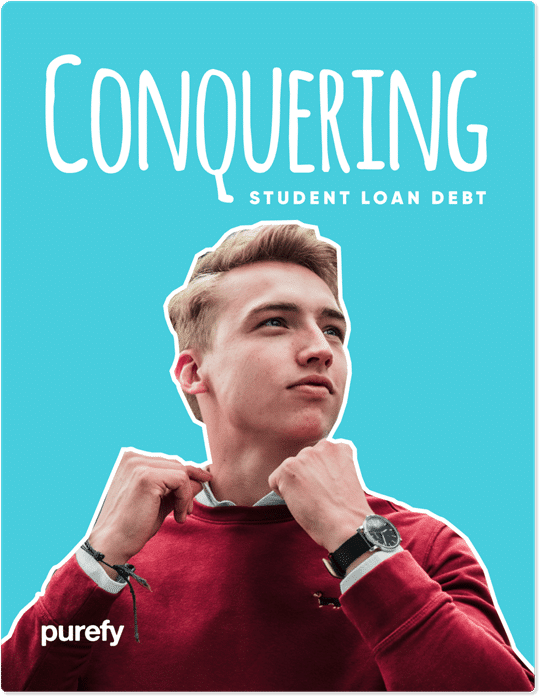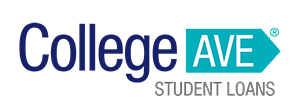USAA offers a number of financial products and services, primarily to members of the military community. Up until a few years ago, USAA offered a discount on student loan interest rates through a partnership with Wells Fargo, but that’s no longer an option.
If you’re unsatisfied with your USAA student loans issued by Wells Fargo and you want more flexibility with your repayment plan or you need to transfer the debt to your child, consider refinancing. This USAA student loan refinance guide can help you determine whether refinancing your USAA loans is right for you and how to find the best lender for the job.
Why you should consider refinancing USAA student loans
USAA no longer offers private student loan discounts through its Wells Fargo partnership, but you can still pay off your loans with the lender if you want. That said, there are several reasons to consider a USAA student loan refinance with a different lender.
Here are some potential reasons why you may wish to switch to a different student loan company:
● You want to save on interest charges: Student loan refinance interest rates have increased since they plummeted to record lows in 2021, but it’s still possible to score a lower interest rate than what you have right now. In fact, now may be the best time to do it, as the Federal Reserve is planning to continue to hike its interest rate, which will cause student loan refinance rates to increase as well. Your best bet to secure a low interest rate is to have a good credit score and a solid income.
● You want to switch from a variable interest rate to a fixed rate: If you have a variable interest rate on your USAA student loans, now is a great time to switch to a loan with a fixed interest rate. You may have enjoyed a lower rate over the past couple of years, but with interest rates on the rise, your monthly payment will likely increase. However, it doesn’t make sense right now to switch from a fixed rate to a variable one, so consider one of these other reasons to determine if refinancing is right for you.
● You need a lower monthly payment: If you’re struggling to keep up with your monthly payment or you need to lower your debt-to-income ratio in order to buy a house,
your options with USAA are somewhat limited. With refinancing, you may be able to extend your repayment term to up to 20 years, which could alleviate some of the stress on your budget.
● You want to be debt-free faster: Depending on the lender, you may be able to get a repayment term as short as five years on a USAA student loan refinance. If you can afford a potentially higher monthly payment, refinancing could help you pay off your debt faster and save more money on interest along the way.
● You want to remove a cosigner: It’s unclear what options USAA student loan borrowers have to release a cosigner. But if you took out student loans with a cosigner while you were in school and you now want to relieve them of the responsibility, refinancing the loans may be your only option.
● You’ve had a poor experience with USAA: For the most part, USAA has a good reputation for customer satisfaction. In fact, the Consumer Financial Protection Bureau didn’t receive any student loan-related complaints about the bank in 2021. But that doesn’t mean every customer is getting a perfect experience. If you’ve had some issues with USAA
and want to explore other options, refinancing allows you to choose a lender based on what’s most important to you. In fact, some lenders offer certain benefits to their borrowers that can provide more value beyond a lower interest rate on their student loans.
● You took out the loans for your child, and they’re ready to repay them: It’s common for parents of college students to take out loans to help put them through school. In some cases, the agreement includes a transfer of the debt once the child has graduated and can qualify to take over the debt on their own. If this is the case for you, some student loan
refinance companies allow your child to refinance the debt in their name so it’s no longer your responsibility.
Carefully consider your current situation and your goals to determine whether a USAA student loan refinance with another lender is a good idea.
The 2 Best Companies to Refinance Student Loans
Our Top-Rated Picks for 2024 Offer Low Rates and No Fees

Positives of refinancing USAA or other private student loans
Student loan forgiveness and repayment assistance programs aren’t available for private student loans, and you also don’t benefit from income-driven repayment plans or the federal student loan payment pause that’s been ongoing since March 2020.
As a result, there aren’t a lot of downsides to a USAA student loan refinance with another lender, as long as the terms of the new loan work in your favor. There are a lot of potential upsides in your decision to refinance – here’s what to consider:
Savings on interest
Depending on your current student loan balance and interest rate (and your credit history and income), it’s possible to save hundreds or even thousands of dollars by refinancing.
As an example, let’s say you borrowed $30,000 with a 10-year repayment term and a 7% interest rate, giving you a monthly payment of $348. Through refinancing, you can qualify for a 4% interest rate with the same repayment term.
If you refinance, your monthly payment will drop to $304, and you’ll save a whopping $5,351 in interest. Even if you extend your repayment term to 15 years, your monthly payment will decrease to $222, and your interest savings will be $1,856. If you opt for a 7-year repayment term, your monthly payment will increase to $410, but you’d save $7,354 in interest.
Use a student loan refinance calculator to get an idea of your potential savings. This is particularly important if you have a variable interest rate and want a fixed one.
You could get more flexibility
Whether your monthly payment is too high or you have some room in your budget for a higher payment, refinancing could help you get the repayment plan that’s right for you. Options typically range from 5 years to 20 years, giving you a lot of room to figure out what works for your situation.
A higher monthly payment could save you even more on interest and help you achieve debt-free status sooner, while a lower payment could make it easier to afford your student loans or cut your debt-to-income ratio enough to get a mortgage.
The important thing is to think about your current financial needs and your long-term goals to find the best fit.
You can choose your lender based on features that are important to you
Even if your experience with USAA student loans has been a good one, it’s possible that you can find a better experience elsewhere. For instance, some lenders may offer discounts on other loans or financial products, better deferment and forbearance options, unemployment protection, and other perks to add value to your experience.
Research other student loan refinancing lenders to get an idea of what they offer. You may be able to get more value or a better overall experience somewhere else.
Remove your or your cosigner’s responsibility for the loan
If you took out a student loan to help your child get through school, you’re the one who’s legally responsible for repaying the debt (even if they choose not to help). And if you applied with a cosigner, the loan is on their credit report and they’re legally required to repay the debt if you can’t afford to.
Refinancing can provide protection for you or your cosigner by allowing you to transfer the debt to your child, or by refinancing the debt in your name only without the cosigner. In either case, it can provide more security to the person who no longer has the responsibility for the debt.
Negatives of refinancing USAA or other private student loans
For the most part, refinancing private student loans has more benefits than drawbacks. However, it’s not always a good decision. Here are some potential pitfalls to watch out for:
You may not qualify for a lower rate
The ability to get a lower interest rate is arguably the most important benefit of student loan refinancing. Not only will it save you money, but it can also make your monthly payments more affordable.
You can technically qualify to refinance student loans with a mid-600 credit score and an annual income of at least $24,000. But you’re unlikely to get a low enough interest rate with those credentials to make refinancing worth it.
In fact, borrowers who refinance their student loans have an average credit score of 774 and an average annual income of $98,156, according to Purefy data. You don’t need to meet those qualifiers to get a better rate, but the better your financial picture looks, the easier it’ll be to get the lowest possible rate.
The good news is that student loan refinance companies allow you to get prequalified before you apply, which can give you an idea of what interest rates you’re eligible for without a hard credit check.
You could end up paying more interest
Using a student loan refinance to lower your monthly payment may be necessary to meet your short-term financial needs or goals. But unless your new interest rate is low enough, it could also result in paying more interest over the life of the loan if you choose to lengthen your repayment term.
Fortunately, the difference may not be a lot. Use a refinancing calculator to get an idea of how refinancing will impact your budget now and in the future.
See How Much You Can Save
View Details
Collapse
Step 3: See How Much You Can Save
$15,310
Lifetime Interest
Savings
$1,018
New Monthly
Payment
$128
Monthly
Savings
| Current Loan | New Loan | Savings | |
|---|---|---|---|
| Rate | 6.7% | 4.2% | 2.5% |
| Lifetime Interest | $37,520 | $22,210 | $15,310 |
| Monthly Payment | $1,146 | $1,018 | $128 |
Like what you see? Check your actual prequalified rates from the industry’s top lenders in just 2 minutes or less.
Refinancing private student loans: Is it smart?
The decision to refinance private student loans is very different than refinancing federal student loans. With federal loans, you get a lot of benefits that private lenders don’t offer. As long as you can secure a lower interest rate through refinancing private student loans, it’s generally a good idea to move forward with your plan.
It can also be worthwhile if any of the other reasons previously discussed are present. But it’s important to take your time to research all of your options to figure out which one is the best fit for you.
When should you refinance USAA or other private student loans?
There are a few different situations where it might make sense to refinance your USAA student loans. Here are some factors to help you make the right decision.
Your finances are in good shape
Again, you’ll have the best chance of getting a low interest rate if your credit score is in the mid-to-upper 700s and your income is close to six figures. Even if you’re not quite where you want to be, it could be worth comparing interest rates to see if you can secure a lower interest rate before they increase too much.
You can get free access to your FICO score with Experian. It’s also a good idea to get access to your credit reports. Experian offers ongoing access to your report with the bureau, and you can obtain your other reports through AnnualCreditReport.com. Usually, you can only get each report every 12 months, but that has changed to weekly through the end of 2022.
If your credit history needs some work, take actionable steps based on the information you find in your report.
You want to save on interest
If you have a variable interest rate, now is a good time to lock in a fixed rate before market rates go up even more. Even if you have a fixed rate, you may be able to get a lower rate than what you’re paying currently. In either case, the lower the rate, the higher the savings.
You’re a parent, or you have a cosigner
If you’re a parent, you can transfer the debt to your child by having them refinance. This can relieve some of the financial pressure you’re experiencing and make it easier to focus on your own financial goals, such as retirement.
If you took out loans with a cosigning parent, refinancing on your own can remove the burden and responsibility from their plate.

Free eBook: How to Conquer Student Loans
Free eBook: How to Conquer Student Loans

Refinancing USAA student loans: How to refinance quickly and easily
If you’re looking to start the refinance process, here are some clear steps to help you work through the process.
1. Set goals for your student loans
Before you do anything else, it’s important to determine why you want to refinance your student loans. While there are clear benefits, they may not necessarily make sense for your situation. Think about your current situation and your goals to determine how refinancing can help.
For example, do you want to cut your repayment term and pay off the debt early or extend your term to lower your monthly payment? Are you looking for different loan program features or a better customer experience? What type of experience do you want going forward? Take some time to think about these questions to understand the correct approach.
2. Compare student loan refinance rates
You may be thinking about refinancing because you received an offer in the mail or online. But instead of taking the first quote you see, it’s crucial to shop around and compare multiple offers to make sure you get the best one.
In just two minutes, you can get prequalified with multiple lenders with Purefy’s rate comparison tool. You’ll then be able to compare offers side-by-side, making the process go more smoothly than if you were to get prequalified with each individual lender. In addition to the interest rate, it’s also important to compare repayment terms, monthly payments, customer satisfaction ratings, cosigner release programs (if applicable), deferment and forbearance options and other features that are important to you.
3. Select your favorite prequalified rate
Prequalified rate quotes aren’t final, but they can give you a good idea of which lender will give you the best deal. Because rate quotes can be similar or even the same, it’s crucial that you look at each loan option holistically rather than fixating on the rate alone.
Additionally, you’ll want to make sure you’re looking at the correct interest rate type. Variable interest rates start out lower than fixed rates, so they’re more attractive. But over time, you’ll end up paying more as interest rates rise.
4. Complete your refinance application
Once you’ve done your due diligence, select the lender that has the best offer, and you’ll be able to click through to its website using Purefy’s Compare Rates tool. Once you’ve landed on the lender’s site, you can complete and submit your application.
Depending on the lender you choose, the required information and documentation can vary. In most cases, you’ll need to give your full name, date of birth, Social Security number, email address and phone number, as well as the payoff amount for your current loans and your existing lender.
As for documents, you’ll usually need to share pay stubs, a W-2 or bank statements to verify your income, a government-issued photo ID and more. It’s a good idea to contact the lender before you apply to find out what documents are required, so you can have them ready to go.
Once you submit the application, the lender will run a credit check and review all of the information you’ve received. If you’re eligible, the lender will provide you with an official offer. This may or may not look like the prequalified offer you saw early in the process because it’s influenced by a closer look at your creditworthiness.
The good news is that you don’t have to agree to the terms the lender provides. If they’re not good enough, you can always switch to a different lender or ask someone to cosign your application to boost your approval odds and opportunity for favorable loan terms.
5. E-sign and close your loan
If you’ve decided to move forward with the lender, you’ll typically be able to review the loan agreement and sign it electronically. It’s crucial to read through the agreement before you sign so you don’t end up with surprises later on.
After you sign, the lender will close the loan and pay off your existing loans. Until you have confirmation that your existing loan balances are paid in full, keep making any scheduled payments with your previous lender. If you end up overpaying, you’ll get a refund. But if you miss a payment, you could get slapped with a late fee. And while it’s unlikely to happen in this scenario, missing a payment by 30 days or more could result in damage to your credit score.
As soon as your new loan is set up, make sure your payments come out of your bank account automatically.
How to refinance USAA student loans and start saving
In some cases, it may make sense to keep your USAA student loans where you are. But even if you like your current student loan situation, it’s still a good idea to shop around and compare different options to make sure you’ve still got the best deal.
As interest rates continue to increase, it’s important to start this process sooner rather than later. The longer you wait, the less potential savings you can get.
Go through the steps outlined above to make the most of your refinancing experience and focus on the features that are the most valuable to you. Think about both short-term needs and long-term goals to find the right balance.
And instead of working with multiple lenders on an individual level, use Purefy’s rate comparison tool to accelerate the process and compare options in a more streamlined manner. Even if you can’t find a better loan out there, it’s important to research all of your options and pick the one that’s best suited for you.
Interested in Student Loan Refinancing? Compare rates from top-rated lenders and see how much you could save.
Checking your rates takes 2 minutes and has no impact on credit.



















